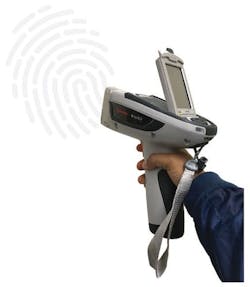New handheld testing device and method ensures binder quality
The paving industry routinely uses a variety of materials to produce and modify asphalt and seal coat binders.
While many state DOTs adopted the Superpave performance grade (PG) binder specification (originally developed for unmodified asphalt binders under the Strategic Highway Research Program), today a much wider range of crude oil sources and additives—materials such as re-refined engine oil bottoms (REOB), polyphosphoric acid, bio-binders, and ground tire rubber—are increasingly being used to formulate and manufacture asphalt binders for asphalt mixtures and seal coat binders. A 2016 Asphalt Institute report estimated that nearly 160,000 tons of REOB go into asphalt mixtures in the U.S. every year. And in standard practices, most asphalt binders today still meet the requirements of the PG specification, despite relatively small amounts of these additives.
In recent years, however, many transportation agencies began noticing premature failures of newly constructed pavements. Along with distresses such as low- and intermediate-temperature cracking and raveling, aggregate loss, and instances of total surface course loss within five years, pavement engineers also have had concerns about embrittlement, as well as a lack of adhesion and tackiness of the asphalt and seal coat binders.
Suspecting that overuse of REOBs in the binders might be contributing to the problem (based on laboratory testing), the Texas DOT (TxDOT) contracted with the Materials and Pavements Division of the Texas A&M Transportation Institute (TTI) to verify acceptable levels, and to find efficient and accurate ways to test for it.
FINDING CONTEXT
“We needed to make every effort to ensure that the asphalt binders that TxDOT purchases do not have contaminants in them that may negatively affect the performance of pavements, and that the specifications are accurate and reasonable,” said Research Engineer Fujie Zhou, TTI’s lead on the project.
To identify critical issues and challenges, TTI researchers first conducted a review of 30 years of literature on the impact of REOB on asphalt binders, asphalt mixtures, and seal coat performance. It was found that REOB has been used in binder modification for decades. The impact of REOB on asphalt binder and mix properties depended on the amount and source of REOB and asphalt binder sources. Additionally, there is not much research on the use of REOB in seal coat binders.
From extensive laboratory testing and analysis of multiple sources of binders and REOBs, the team then developed and verified scientific methods to detect and quantify the amount of REOB used in both asphalt binders and hot-applied seal coat binders. The lab tests done over the course of the project confirmed that adding more than 5% REOB by weight of total binder can negatively impact the rutting and cracking resistance of asphalt mixes.
A similar result was found for seal coats, as REOBs negatively impacted the adhesive property of seal coat binders. Researchers also found that binders produced with the same target PG, but with different modification techniques, can have quite different flow and embrittlement properties. The binders modified with REOB tend to have poor relaxation property at low temperature, when compared with the same binders modified with bio-rejuvenators. The more the REOB added, the worse the relaxation property of the REOB-modified binders.
NEW METHODS
The new lab test methods developed on this project require using either a handheld or a benchtop x-ray fluorescence (XRF) instrument in a simple process. XRF spectrometry is an analytical method to determine the chemical composition of materials, whatever their form (solid, liquid, etc.). XRF also can sometimes be used to determine the thickness and composition of layers and coatings. The XRF testing detects the presence and the intensities of some key elements—e.g., calcium (Ca), copper (Cu), potassium (K), molybdenum (Mo), zinc (Zn), and phosphorus (P)—that reveal whether REOB exists and estimates the amount in the binder being tested.
“The method is fast, accurate, and non-destructive, and usually requires only a minimum of sample preparation,” said Dr. Pravat Karki, a key member of the TTI research team. “The precision and reproducibility of XRF analysis is very high. It’s almost like taking a fingerprint of the asphalt binder. The analysis time after the measurement is only a few seconds.”
“Based on the findings of this project, TxDOT issued a special provision to TxDOT Specification Item 300 that limits the REOB content to 5% in all asphalt binders,” said Research Engineer Cindy Estakhri, another leading researcher on the project. “That means asphalt cement binders for seal coats are also included in this requirement.”
Using the handheld XRF makes it possible to check the binder quality on the jobsite, a more efficient process than testing in the lab because using the benchtop XRF takes more time. That method can still be valuable, though, as a follow-up to the handheld option, should further analysis be necessary. Moreover, use of XRF analysis has potential cost savings for TxDOT and the state.

